2013.12.13 19:48
12 December
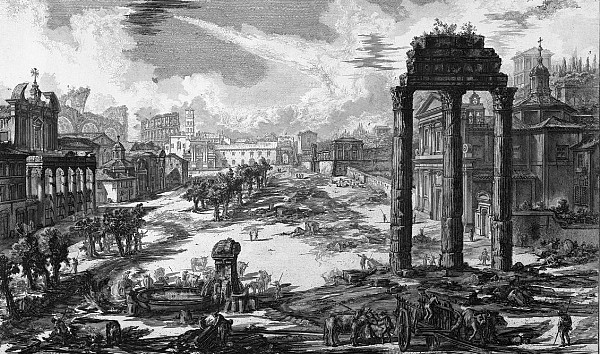
...it looks as if the Temple of Vesta is not within the Piranesi perspective 'view' of the Roman Forum. The three columns with entablature belong to the Temple of Castor and Pollux, and the round Temple of Vesta would be right in the center of the view within the clearing in front of the two tiny figures. I'm guessing the temple base was still buried in Piranesi's time, and the few columns of the round temple that are in the Forum today are a reconstruction of 20th century vintage. Note, too, how the church facade seen through the three columns does not exist in our time.
The Roman Forum is not delineated within the Ichnographia Campus Martius, but Piranesi did draw a reconstructed plan of the Roman Forum within volume one of La Antichita Romane--that plan is nowhere close to what we know the plan to be today.
"The Vestals, priestesses of the goddess Vesta, whose temple was opposite their house, were selected among the daughters of patrician families between six and ten years of age.
They were exempt from the common law, had many privileges and great political importance, often interposing to save a life, or to restore harmony at times of crisis. They sat in seats of honour at public games and were almost the only citizens allowed to drive within the walls. Their duty was to watch by night and by day the sacred fire in the Temple, and to guard the Palladium. If the fire was allowed to go out, the Vestal in charge was scourged for her carelessness; if she violated her vow of chastity, she was condemned to be buried alive."
The place where Vestals were buried, the Campus Sceleratus, is delineated within the Ichnographia Campus Martius, but, unless you are looking at an actual engraving of the Ichnographia, you are not likely to discern its label:
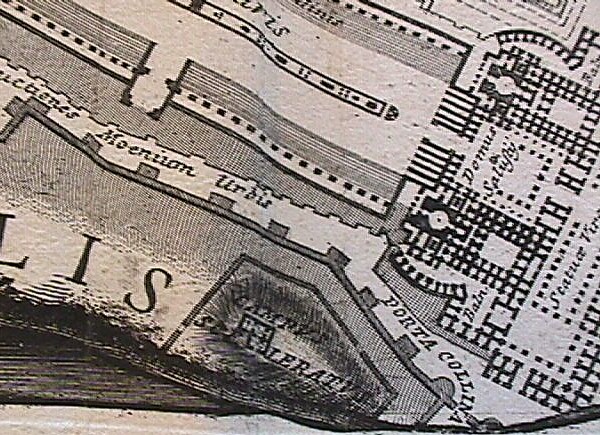
I believe that I once read somewhere that it was a criminal offense to murder any virgin in Rome, thus the quandary of how execute a fallen Vestal, hence live burial at the Campus Sceleratus.
By the way, the small exhibit at Quondam mentioned above was innuendo.
What I find interesting is that the notion of a god having sex with a virgin is at the very foundation of Christianity. Here's something I wrote just over 10 years ago:
Re: Bib. for Cyrillona's Mariology?
2003.08.09 13:32
John,
Thank you for the Graef citation. If Graef does indeed confuse Immaculate Conception with Annunciation/Incarnation, then this is one more example where such a mistake is made within modern scholarship. I have become very intolerant of this mistake after finding it several times within contemporary architectural theory texts. I even see this presence of misinformation compounded because it implicates not only authors, but editors/review peerage as well. This mistake needs broad/public attention within the realm of scholarship simply to cease the perpetuation of its existence.
It is the Annunciation, as reported by Luke 1:26-38, where a series of events are clearly described.
1. (26) The angel Gabriel is sent by God to Nazareth. The presence of an angel already constitutes a miraculous event, a theophany.
2. (27) The angel is sent to a betrothed virgin named Mary. Here Scripture clearly states that Mary is a virgin and that she is promised in marriage to Joseph.
3. (28) In greeting, Gabriel exalts Mary; "the Lord is with thee" reiterates the theophany, thus Mary's being "full of grace" and "Blessed among women" is Divinely sanctioned.
4. (29) Mary is troubled by such a greeting, signifying her overall innocence in this situation.
5. (30) Gabriel assures Mary of her safety within the theophany taking place.
6. (31) Gabriel 'announces' to Mary that she will conceive and subsequently give birth to a boy, Jesus.
7. (32-33) Gabriel Highly exalts the nature of Mary's announced offspring, indeed to the point of infinity.
8. (34) Mary exclaims confusion at the announcement, while she herself proclaims her virginity.
9. (35) Gabriel tells Mary the Holy Spirit will come upon her, the Most High will overshadow her, and the Holy One to be born will be called the Son of God. Gabriel essentially announces the soon forthcoming of the Trinity, a complete theophany.
10. (36) Gabriel then announces the Precursor, John the Baptist.
11. (37) "for nothing shall be impossible with God."
12. (38) Mary's ultimate reply, "Behold the handmaid of the Lord; be it done to me according to thy word," is extremely important on two counts. First, it is at the moment of Mary's complicity that the Incarnation (the Word becoming flesh) occurs. (Note Gabriel efficiently departs as soon as his task is complete.) Second, without Mary's complicity, the Incarnation would have been the result of a rape, not at all unlike the sexual relationship between Mars (a divinity) and Rhea Silvia (a Vestal Virgin), another reported theophany which progenerated Rome.
After the Annunciation/Incarnation comes the Visitation, where John the Baptist, when he for the first time is in the presence of the Incarnation, takes a noticeable pre-natal leap.
Piranesi further 'played' with the Pagan/Christian inversion of god and virgin via the Templum Martis/church of S. Agnese in Agone.
A lot of all the above was way in the back of my mind during the ZHA World Cup Stadium as vagina discussions. I wonder if Piranesi's spiraling mock sea-battle stadium within the Ichnographia Campus Martius, the Naumachia Domitiani, will become the inspiration for a new stadium designed within the next decade or so.
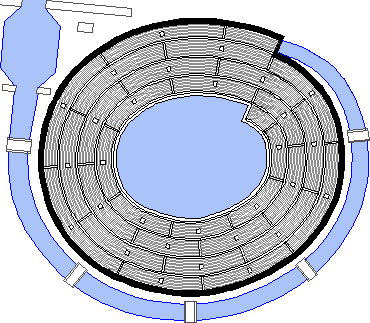
Also, I'm currently re-reading Tafuri's Architecture and Utopia, and I have a heightened awareness of the avant-garde architectural lineage that Tafuri sees the Ichnographia Campus Martius as the protogenitor of. I think it's now possible, however, to 'fabricate' a whole other avant-garde architectural lineage once one understands what the Ichnographia Campus Martius is really all about.
| |
2013.12.18 20:24
18 December
1997: ...far more manipulative of the model and 2D data in the collection. ...collaged-distorted designs demonstrating the true possibilities of "virtual" space and museums of architecture. ...new definitions of museums are also being created in the process--a "virtual" museum can go beyond the "mission" of a real museum.
1998: Is a lot of today's built environment an unwitting form of "plug-n-play" architecture? All this reminds me of Einstein's answer to the question "to what did he himself attributed the great workings of his mind?" Einstein basically answered that he never stopped thinking like a child, meaning he never discounted self-evidence and he never took anything for granted.
2000: The Latin word 'concepto' (a verb) means: (1) to conceive, become pregnant and (2) to conceive in mind.
The Latin word 'conceptio' (a feminine noun) means (1a) a comprehending; hence concretely, a circuit, compass: the system of the universe [and here Vitruvius is cited as the source of the concrete meaning] -- (1b) a collection, reservoir -- (1c) a conception, a becoming pregnant -- (2a) a composing, drawing up of juridical formulas -- (2b) an expression
From my own experience as an architecture student and as an occasional jury member of student design presentations, the notion of formulating a 'concept' early on in the design process is an integral part of contemporary architectural education. I admit that up until five days ago, when I first read the Latin definitions above, I never connected the notion of formulating a design concept with the notion of becoming pregnant (although the connection in English is surely present in the word 'conception'). For me, concept in design meant an idea formulated from the building program and site, and this idea would both guide the design process as well as provide the design with a cohesion.
Now, knowing the Latin definitions of concepto and conceptio, I change my understanding of concept vis-à-vis designing to being metaphorically that moment when the design process becomes pregnant. And here I want to recall Saul's question "whether there are any arguments for a language of architecture that go beyond appeals to a metaphorical sense of 'language'. [What follows is not to refute Saul's quest, which I see as an insightful mind seeking an interesting and seemingly unprecedented vein of thought, but to suggest what might be the very root of the opposite of what Saul seeks--working with the logic(?) that to understand what something is not will aid in understanding what something is.]
It seems fairly clear that the notion of mentally attaining a concept is already a metaphor for physically becoming pregnant (and here I wonder whether the age old male striving for intellectual dominance is really nothing more than womb envy), hence a substantial part of design/creativity language is likewise purely metaphorical. Again, I'm not trying to suggest that a non-metaphorical language of architecture cannot be found or formulated, rather to point out that the concept of a non-metaphorical language is either: (1) already operating metaphorically in that mental conception reenacts physical conception, or (2) a non-metaphorical language of architecture is one that seeks to equal physical conception itself (i.e., to enact rather than reenact).
Last week I offered "innuendo" as a "display [that generally] deals with the 'language' and meaning of architectural planimetric forms, while specifically [displaying] the 'master key' that unlocks the long held mysteriousness of Piranesi's Ichnographia Campus Martius." Take another look at innuendo/0001

because you will see a 'building' that is both literally and figuratively conception. This tiny building is indeed one of the few plans within the Ichnographia that Piranesi does not provide with a Latin label, and that is because the building, through its plan, already speaks for itself, and, moreover, it speaks of all the 'concepts' there involved, namely, Piranesi's conception of architectural language and the very conception of Rome [Romulus] itself. Piranesi's architectural intensification here is so tight to the point that indeed the medium is the message. And I now wonder whether it might be more worthwhile to seek a language of architecture where the medium is the message, or is such a 1=1 language the same as "a language of architecture that goes beyond appeals to a metaphorical sense of 'language'?"
2004: The design you refer to, an open frame with each level a plot of landscaping with housing, is by SITE,
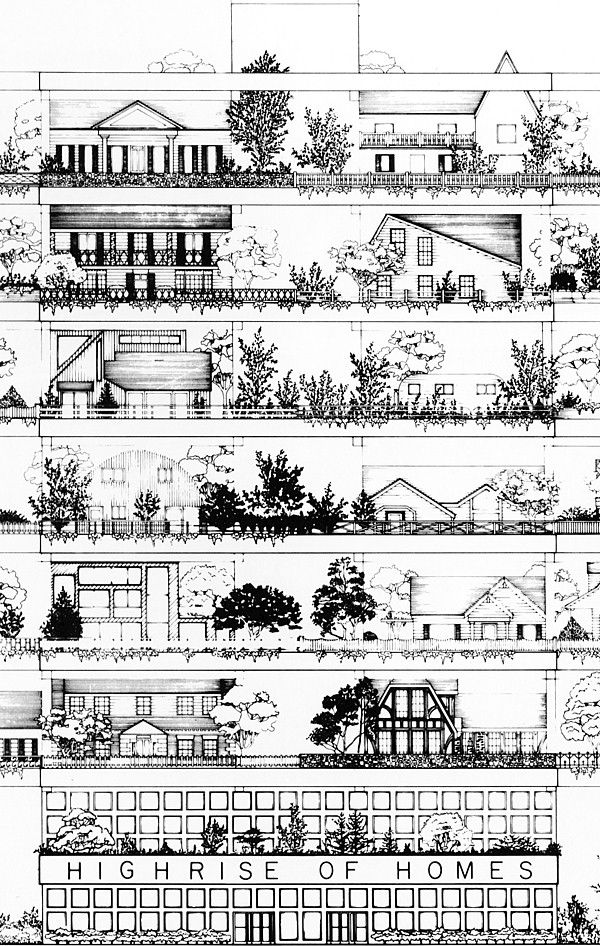
and I can see the connection with the City Tower project
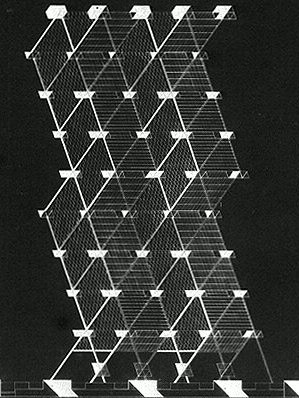
(which was a schematic proposal to replace Philadelphia's City Hall). A new physical model of the City Tower project was constructed just over ten years ago for the Kahn exhibition back then. I knew the model builders, and the design turned out to be much more subtly complex than first expected. I'd love to construct a computer model of the project, but without sufficient data, it's futile for me to attempt. Basically, it's one of those designs that is abundantly virtual in that there is no real building and even the schematics do not fully render what the real building would actually be like. Like you suggest via the SITE example, the City Tower project could wind up containing just about anything.
Anne Tyng is also a key player here, and should not be forgotten. She's the one that was most interested in numbers and geometric constructs as structural systems. Her theoretical writing (from back then) is dense and often abstruse, but perhaps worth reading again with more understanding eyes.
2013: Reading 'conceptio' (a feminine noun) means (1a) a comprehending; hence concretely, a circuit, compass: the system of the universe [and here Vitruvius is cited as the source of the concrete meaning] again today made me wonder anew as to the significance of the compass of the Ichnographia matching exactly the plan of the Porticus Neronianae.
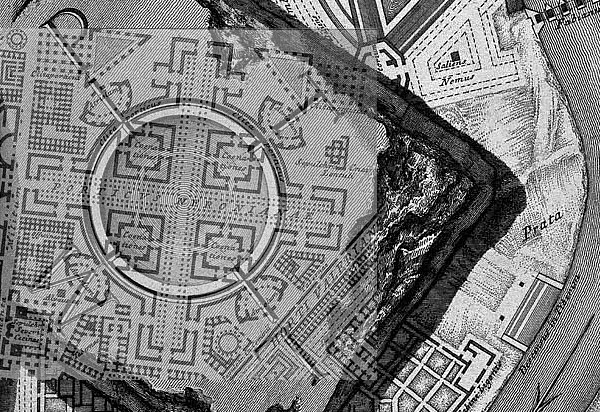
Was Piranesi covertly delineating the "system of the universe?"

| |
2013.12.20 18:55
20 December
This year's late Autumn is very different than last year's late Autumn--I've already had to shovel snow four times in the last two weeks. Despite the warmer temperatures, yesterday's and today's walk in the woods was still amidst a white blanket of snow--quite nice, actually. Saw a lone fawn yesterday, in the woods adjacent the cow pasture high point, the third time I'd seen it there since the controlled hunt on 4 November. I get a strong feeling that that's where the fawn last saw its mother alive. It's interesting how this animal's mind registers the spot of last sighting to then be, by default kind of, the spot of possible further sighting. A sadly innocent point of view, or is that exactly how hope operates?
Read this while having a late lunch: "Have you ever stopped to wonder anything about what you see there [ArchDaily] or on Archinect or Dezeen or ArchNewsNow or whatever blog or newsfeed you tune into (or tunes into you) every morning?" Figure out for yourself who wrote that in the book UPS delivered here today. I have to return/exchange one of the other books I received today; Project of Crisis is missing pages 123 through 154. Amazon is express shipping a new copy tomorrow. Such modern times we live in, or is it such Christmas (shopping) times we live in?
Reading over the last week and a half has been very Tafuri centric. So far finished Architecture and Utopia, "Ashes of Jefferson," (I think I'm going to read the chapters of The Sphere and the Labyrinth in reverse order) "The Boudoir in The Expanded Field," and "Manfredo Tafuri, or, Humanism Revisited." Last night I started to re-read Theory and History of Architecture. I'm reading the texts to learn/study the structure of Tafuri's history/theories, with particular focus on how Tafuri fit's Piranesi's Campo Marzio Ichnographia into his history. As I wrote a week ago, "Also, I'm currently re-reading Tafuri's Architecture and Utopia, and I have a heightened awareness of the avant-garde architectural lineage that Tafuri sees the Ichnographia Campus Martius as the protogenitor of. I think it's now possible, however, to 'fabricate' a whole other avant-garde architectural lineage once one understands what the Ichnographia Campus Martius is really all about."
At this point I'm still reading, but I'm also beginning to formulate "a whole other avant-garde architectural lineage." It's rather inspiring to even imagine a whole other architectural history of the last 250 years. Aha, working title: Architecture post Semiquincentennial.
2013.12.23 19:47
23 December
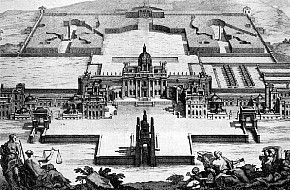
I'm now wondering whether the above image of Castle Howard from Vitruvius Britannicus (published 1715-1725) somehow inspired the architecture of Piranesi as delineated within Il Campo Marzio (1762). Remember the...
I was prompted by the "what is experimental architecture" thread to look again at "Piranesi's Campo Marzio: An Experimental Design." After reading a few pages it became evident that the essay/project could be 'rewritten' to deliver a whole other set of results, a whole other 'history.'
<
By covertly publishing the Ichnographia in a second state was Piranesi himself conducting an experiment to see who would ultimately discover the two different plans?
Piranesi's language of the plans relates back to the origins of Rom(ulus and Remus) itself.
"Both Piranesi's Campo Marzio and Picasso's Dame au violon are "projects," though the former organizes an architectural dimension and the latter a human mode of behavior. Both use the technique of shock, even if Piranesi's etching adopts preformed historical material and Picasso's painting artificial material (just as later Duchamp, Hausmann and Schwitter were to do even more pointedly). Both discover the reality of a machine-universe: even if the eighteenth century urban project renders that universe as an abstraction and reacts to the discovery with terror, and the Picasso painting is conceived completely within this reality.
But more importantly, both Piranesi and Picasso, by means of the excess of truth acquired through their intensely critical formal elaborations, make "universal" a reality which could otherwise be considered completely particular."
Manfredo Tafuri, Architecture and Utopia: Design and Capitalist Development, p. 90.
There is no Picasso painting with the title Dame au violon, but it is possible that Tafuri is referring to Portrait of a Girl (1914):
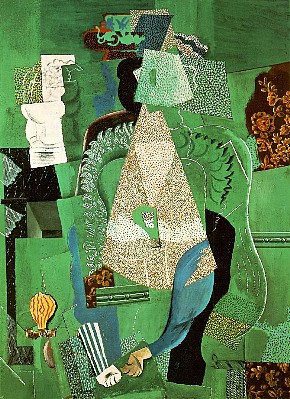
Project: redraw the Ichnographia Campus Martius following the principles of Picasso's (Synthetic) Cubism.
|